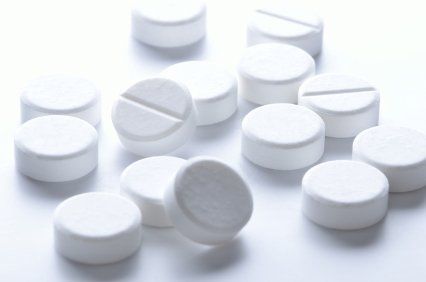Study Identifies Mechanism of NSAID-Induced Apoptosis in Colon Cancer
Researchers have identified a mechanism that could explain how NSAIDs lower the risk of developing intestinal polyps that can transform into colon cancer.
Researchers have identified a mechanism that could explain how NSAIDs lower the risk of developing intestinal polyps.

A new study led by researchers at the University of Pittsburgh Cancer Institute and the University of Pittsburgh School of Medicine has identified a biochemical mechanism that could explain how nonsteroidal anti-inflammatory drugs (NSAIDs) lower the risk of developing intestinal polyps that can transform into colon cancer. Although this preventive effect has been previously demonstrated in animal studies and clinical trials, “the mechanisms underlying the antineoplastic effects of NSAIDs are currently unclear,” explained senior investigator Lin Zhang, PhD, and colleagues in an article published online in the Proceedings of the National Academy of Sciences. The researchers hope the findings will assist in the development of new drugs to prevent colon cancer.
Apoptotic cell death in mammalian cells is unleashed via a “cascade of events,” key among which the authors noted “is the translocation of at least two apoptogenic proteins from the mitochondria into the cytosol to trigger the activation of caspase proteases.” Cytochrome c is released from the mitochondria into cytosol and binds to other proteins, ultimately leading to activation of the caspase cascade. The second apoptogenic mitochondrial protein released into cytosol during apoptosis is second mitochondrial-derived activator of caspase (SMAC), also called DIABLO (direct inhibitor of apoptosis protein [IAP]-binding protein with low pI). In the present study the investigators used gene targeting and RNA interference to investigate the role of SMAC in apoptosis induced by NSAIDs in colon cancer cells.
They determined that SMAC is “essential” for the apoptosis induced by NSAIDs in colon cancer cells. Although cytochrome c release and SMAC release appear to be two independent events that are mediated via different mechanisms, the investigators said their results “suggest that these two events are related to each other and cytochrome c cannot properly translocate to the cytosol without SMAC. This explains why a majority of the apoptosis induced by NSAIDs is inhibited in the SMAC-KO cells with a concomitant decrease in caspase activation.”
Although SMAC-KO cells are deficient in NSAID-induced apoptosis, the long-term viability of these cells was decreased after treatment with sulindac, the most effective NSAID in tumor suppression. The investigators said this suggests that “mechanisms other than apoptosis” are involved in the growth-suppressing effects of NSAIDs. “Our observations should stimulate further in vivo studies to clarify these issues.”
“Our results demonstrate that SMAC is required for apoptosis induced by NSAIDs in colon cancer cells,” they concluded. “Elucidating the role of SMAC in NSAID-induced apoptosis may have important implications for cancer prevention. SMAC and SMAC-derived reagents can potentially be used to enhance the antitumor effects of NSAIDs and other anticancer agents, and to overcome drug resistance caused by deficiencies in apoptosis due to genetic alterations in cancer cells.”
The researchers hope to use this new understanding of the mechanism as a starting point to design better drugs and effective cancer prevention strategies for patients at high risk of colon cancer. "Ideally, we could harness the tumor-killing traits of NSAIDs and avoid possible side effects that can occur with their chronic use, such as gastrointestinal bleeding and ulcers," said Zhang.